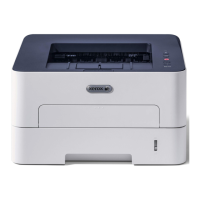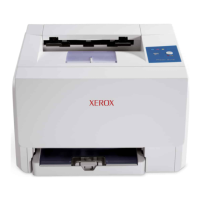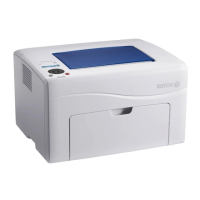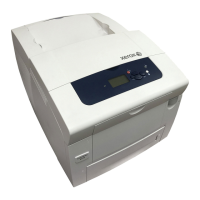Many
operations
are
performed in
floating-point
format.
Other
typical
characteristics
include
high system
input/
output
transfer
rates.
General-purpose
features
are
described
in
the
following
paragraphs.
Floating-Point
Hardware. Both short
(32-bit)
and
long
(64-bit)
formats
are
avai
lable
in
the
floating-point
in-
structions.
Under program
control,
the
user may
select
optional
zero
checking,
normalization,
floating-point
rounding
and
significance
checking.
Significance
check-
ing permits use of short
floating-point
format for high
pro-
cessing
speed
and
storage economy
and
of long
floating-
point
format
when
loss of
significance
is
detected.
Indirect
Addressing.
Indirect
addressing
facilitates
table
linkages
and
permits
keeping
data
sections
of a program
separate
from
procedure
sections
for
ease
of
maintenance.
Displacement
Indexing. Indexing by means of a IIfloat-
ing
ll
displacement
permits
accessing
a
desired
unit
of
data
without
considering
its
size.
The
index
registers
automatically
align
themselves
appropriately;
thus,
the
same
index
register
may be used on
arrays
with
different
data
sizes.
For
example,
in a matrix
multiplication
of
any
array
of
full word,
single-precision,
fixed-point
numbers,
the
results may be stored in a
second
array
as
double-precision
numbers, using
the
same
index
quantity
for both arrays. If
an
index
register
contains
the
value
of
k,
then
the
user
always
accesses
the
kth
element,
whether
it
is a
byte,
halfword, word, or doubleword.
Incrementing
by various
quantities
according
to
data
size
is not
required;
instead,
incrementing
is
always
by units
in a
continuous
array
table
regardless
of
the
size
of
data
element
used.
Instruction
Set.
The instructions permit short, highly
optimized
programs
to
be
written.
These
are
rapidly
assembled
and
minimize both program
space
and
execu-
tion
time.
Conversion Instructions.
Two
generalized
conversion
in-
structions
provide
for
bidirectional
conversions
between
internal
binary
and any
other
weighted
number system,
including
BCD.
Call
Instructions. These four instructions permit handling
up
to
64
user-defined
subroutines,
as
if
they
were
bui
It-in
machine
instructions.
Call
instructions
also
gain
access
to
specified
operating
system
services
without
requiring its
intervention.
4 Time-Shari
ng
Features
Interpret
Instruction. The
Interpret
instruction
simplifies
and
speeds
interpretive
operations
such as
compilation,
thus
reducing
space
and
time
requirements for compilers
and
other
interpretive
systems.
Four-Bit
Condition
Code.
Checking
results is simpl
ified
by
automatically
providing information on almost
every
instruc-
tion
execution,
including
indicators
for overflow,
under-
flow,
zero,
minus,
and
plus,
as
appropriate,
without
requiring
an
extra
instruction
execution.
Direct
Input/Output
(DIO).
Direct
input/output
facili-
tates
in-line
program
control
of
asynchronous or
special-
purpose
devices.
This
feature
permits information
to
be
transmitted
directly
to
or from
general-purpose
registers.
Multiplexor
In
ut/Output
Processor (MIOP).
Once
in-
itialized,
I 0 processors
operate
independently
of
the
basic processor,
freeing
it
to
provide
faster response
to
system needs.
An
MIOP
requires
minimal
interaction
with
the
basic processor.
I/O
command doublewords
per-
mit both command
chaining
and
data
chaining
without
intervening
basic processor cO:ltrol.
I/o
equipment speeds
range
from slow
rates
involving
human
interaction
(tele-
typewriter,
for example)
to
transfer
rates
of
rotating
mem-
ory
devices
of over 750, 000 bytes per
second.
Peri-
pheral
controllers
attached
to
an
MIOP
may
be
operated
simultaneously.
TIME-SHARING
FEATURES
Time-sharing
is
the
ability
of a system
to
share its total
resources
among many users
at
the
same time. Each user
may
be
performing a
different
task,
requiring a
different
share of
the
available
resources. Some users may
be
on-
line
in
an
interactive,
IIconversationalli mode with
the
basic
processor
whiie
other
users may
be
entering
work to
be
processed
that
requires only final
output.
Time-sharing
features
are
described
in
the
following
paragraphs.
Rapid
Context
Saving. When
changing
from
one
user
to
another,
the
operating
environment
can
be
switched
quickly
and
easi Iy.
Stack-manipulating
instructions permit storing
in a push-down
stack
of 1
to
16
general-purpose
registers by
(1
single
instruction,
Stack
status is
updated
automat!ca!!y
and
information in
the
stack
can
be
retrieved
when
needed
(also, by a single instruction). The
current
program status
words, which
contain
the
entire
description
of
the
current
user's environment
and
mode of
operation,
may be stored
anywhere
in memory,
and
new program status words may be
loaded,
all
with a single instructi on.
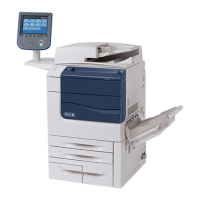
